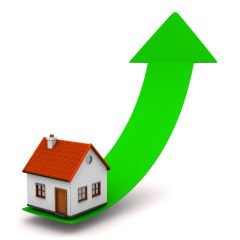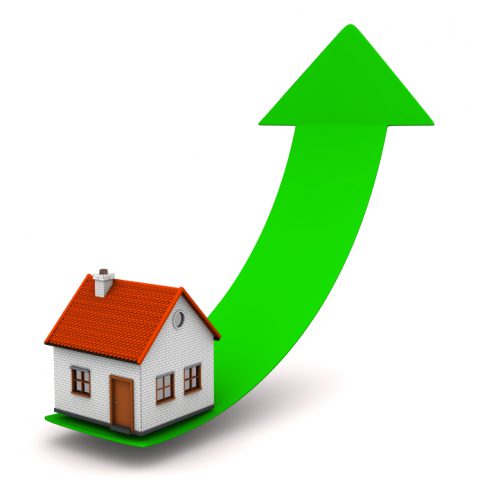Investors Receiving Highest Returns in Manchester
HSBC Mortgages has found that the top three areas for receiving the highest rental returns are in the North West. So far this year, Manchester has offered the largest yield, at 7.93%.
Manchester made it to the top of the buy-to-let hotspots in the country, up from second place in 2014. Rental returns in London are some of the lowest.
Buy-to-let investors have been heading to the North of England as prices are typically lower and consequently produce higher yields. HSBC found Manchester, Kingston upon Hull and Blackpool to have the best returns.
The bank also revealed that Manchester has experienced a slight rise in average property prices, up from £104,244 in 2014 to £108,870 in 2015. However, economic progress in the city has upheld strong demand for rental accommodation.
Annual rents in Manchester have increased by 4% in the past year, from £8,316 to £8,628. Furthermore, the North West as a whole, especially Manchester, has one of the largest student populations in Europe.
HSBC found that over a quarter (27%) of housing stock is privately rented in the city, giving it the highest proportion of rental homes in the UK.
Kingston upon Hull and Blackpool have climbed the list due to their low house prices and strengthening demand for rental accommodation.
The average house price in Kingston upon Hull is £69,135 and Blackpool’s is slightly higher at £79,654. However, both areas require the lowest initial buy-to-let investment of all locations studied. The research included 50 UK towns and cities with the most private rental housing stock.
Top 20 areas for buy-to-let returns
| Position | Location | 2014 position | % of privately rented housing | Average house price | Average monthly rent | Average annual rent | Rental yield |
Year-on-year yield growth |
| 1 | Manchester | 2 | 27% | £108,870 | £719 | £8,628 | 7.93% | -0.7% |
| 2 | Kingston upon Hull | 5 | 19% | £69,135 | £450 | £5,400 | 7.81% | 4.5% |
| 3 | Blackpool | 4 | 24% | £79,654 | £488 | £5,856 | 7.35% | -3.6% |
| 4 | Forest Heath | 22 | 22% | £171,322 | £1,035 | £12,432 | 7.26% | 38.7% |
| 5 | Coventry | 6 | 19% | £115,945 | £702 | £8,424 | 7.2% | 1.5% |
| 6 | Southampton | 1 | 23% | £151,415 | £900 | £10,900 | 7.13% | -18.3% |
| 7 | Nottingham | 3 | 22% | £89,312 | £524 | £6,288 | 7.04% | -8.3% |
| 8 | Liverpool | 9 | 22% | £90,426 | £494 | £5,928 | 6.56% | 0.8% |
| 9 | Cardiff | 16 | 20% | £150,892 | £802 | £9,624 | 6.38% | 6.8% |
| 10 | Portsmouth | 8 | 22% | £155,696 | £825 | £9,900 | 6.36% | -2.2% |
| 11 | Slough | 11 | 23% | £198,972 | £1,050 | £12,600 | 6.33% | -1.8% |
| 12 | Cambridge | 10 | 24% | £205,019 | £1,083 | £12,995 | 6.31% | -2.5% |
| 13 | Bournemouth | 12 | 28% | £183,600 | £950 | £11,400 | 6.21% | -0.3% |
| 14 | Oxford | 7 | 25% | £277,201 | £1,432 | £17,184 | 6.2% | -11.7% |
| 15 | Luton | 15 | 21% | £144,721 | £725 | £8,700 | 6.01% | 0.4% |
| 16 | Leicester | 17 | 21% | £115,860 | £550 | £6,600 | 5.7% | -3% |
| 17 | Brighton & Hove | 13 | 28% | £265,858 | £1,248 | £14,976 | 5.63% | -8.8% |
| 18 | Southend-on-Sea | 23 | 21% | £172,024 | £776 | £9,312 | 5.41% | 4.4% |
| 19 | Norwich | 25 | 20% | £158,102 | £700 | £8,400 | 5.31% | 5.4% |
| 20 | Newham | 14 | 33% | £292,306 | £1,255 | £15,192 | 5.2% | -13.4% |
Head of Mortgages at HSBC, Tracie Pearce, comments on the significance of location, property prices and rental demand when investing in the buy-to-let sector: “Our research shows buy-to-let remains an attractive option for investors, but it’s important they focus on locations where rents have outpaced house prices. This means not just looking at large towns and cities, but also commuter areas and those with high rental demand and concentrated employment, such as a hospital or university nearby.
“Almost a third of areas in our report have seen a year-on-year growth in yield and almost half of the areas have achieved yields above 5%.
“Buy-to-let is a big investment and shouldn’t be taken lightly, but with the right research, landlords can feel confident that they can achieve good returns around the UK.”1
The top buy-to-let hotspot in London is Newham, with an annual rental yield of 5.2%.
However, the capital has experienced continuous decline in rental returns as property prices have increased without corresponding rents. Newham, Brent and Lewisham have seen a decrease in yield growth of over 10%.
Six of the ten worst places for buy-to-let returns are in London, with yields as low as 2.87% in Kensington and Chelsea, where the average house price is now over £1m and rents have been stagnant.
1 http://www.landlordzone.co.uk/news/manchester-buy-to-let-gives-highest-blt-yields#







